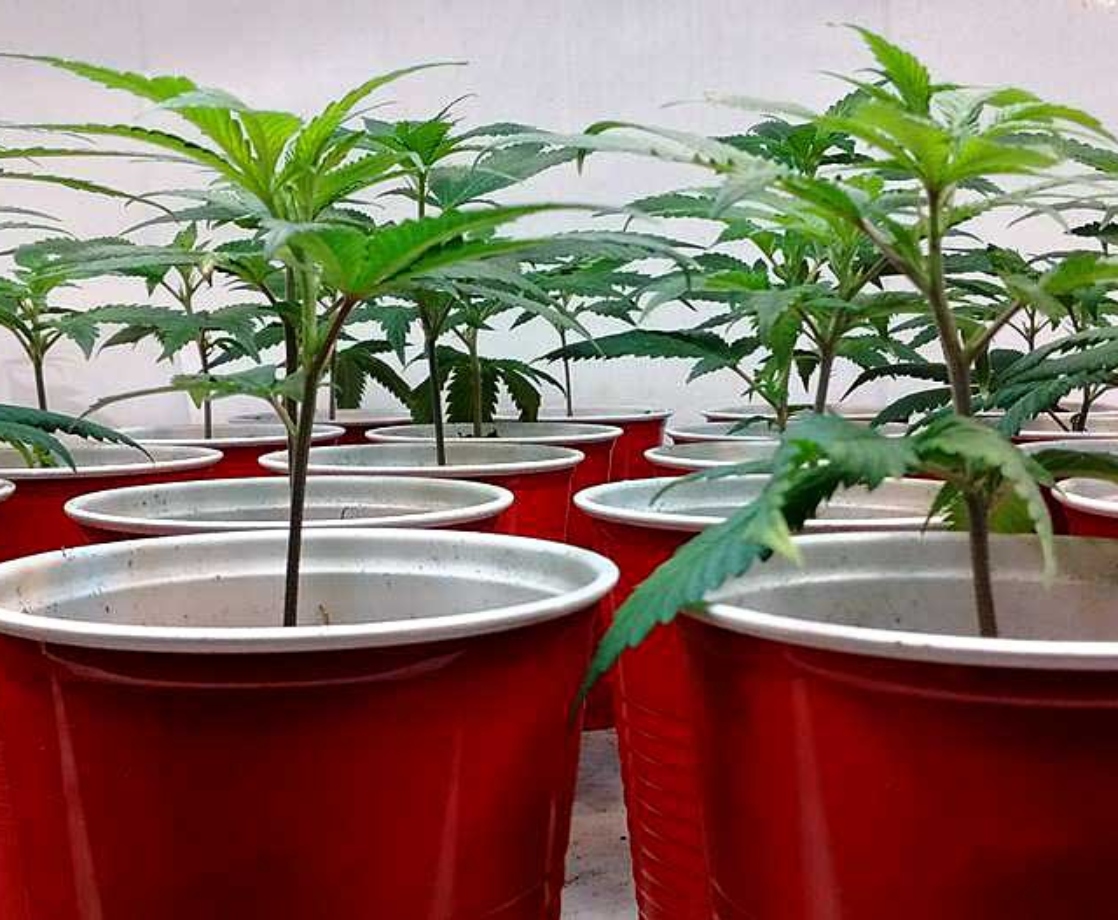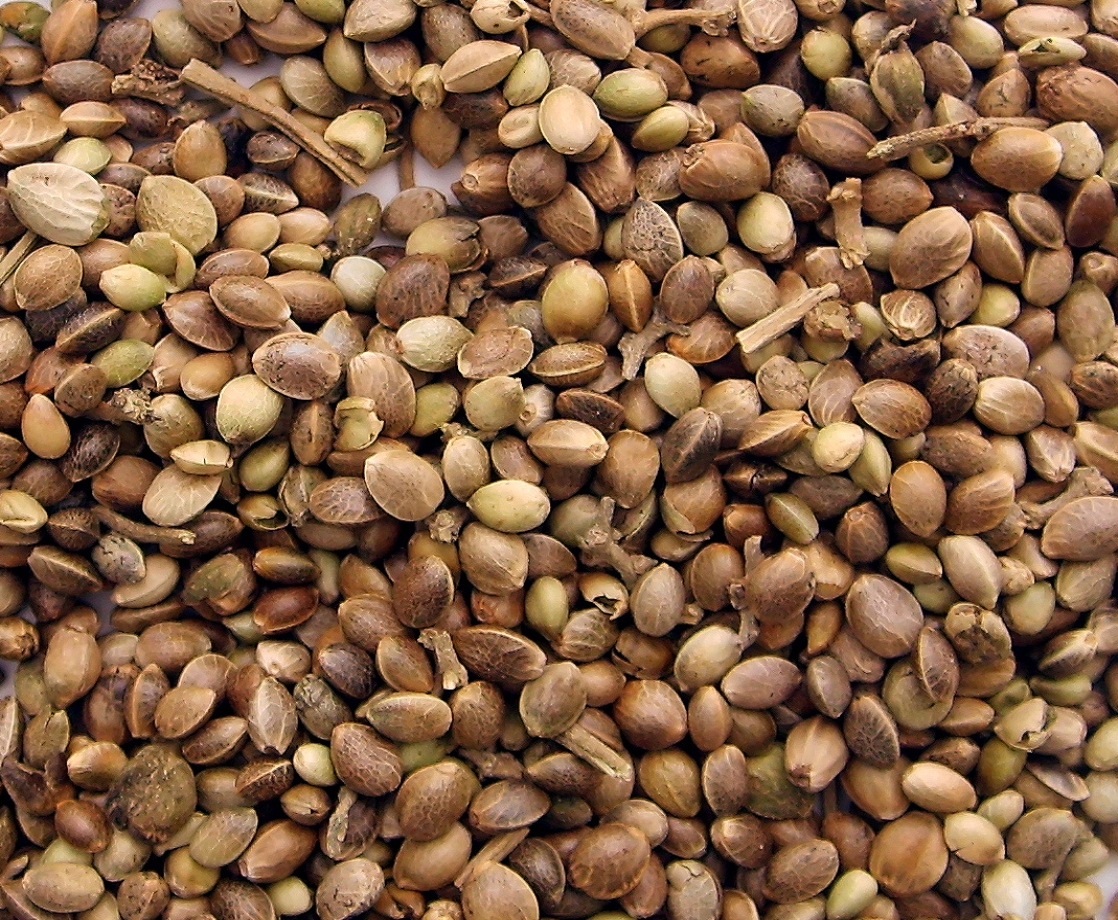Maintaining your own pot garden can be an enjoyable and money-saving labor of love. There’s just nothing like sparking a joint of prime cannabis flower that you’ve produced with your own hands. But to stay in the game long term, the next generation of cannabis plants should never be too far out of mind. While many gardeners choose to start each crop from seed, others opt to clone plants with desirable traits from one generation to the next. But what is cloning weed and how do you do it?
Cloning weed is a method of asexual reproduction that allows you to make exact genetic copies of your mother plants. By only cutting a branch from an existing plant and encouraging it to grow roots, an entirely new plant can be produced. Cloning weed is inexpensive and easy to do and will save you the cost of acquiring new genetics for each run of plants. If planned and executed properly, a weed cloning regimen will allow you to maintain your favorite strain for years-on-end.
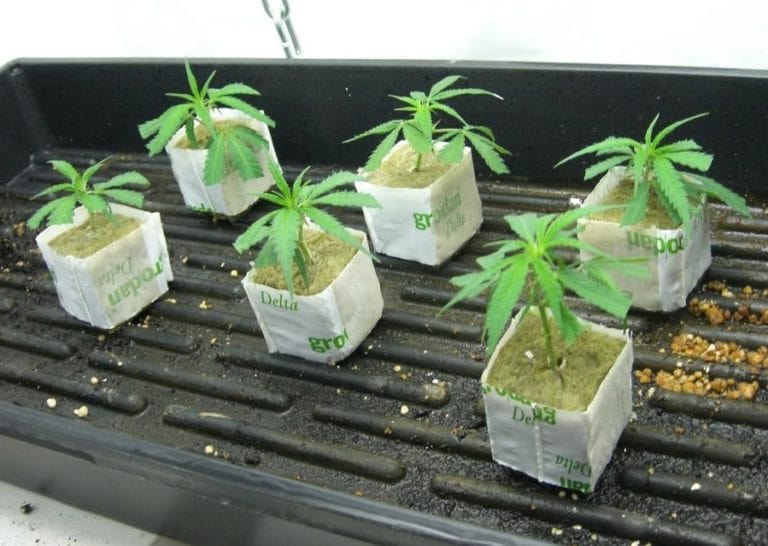
Supplies for Cloning Weed
Before you start making cuttings for clones, you’ll want to gather a few supplies. They all can be easily obtained online or from your local grow shop.
- A razor or very sharp scissors or shears for taking cuttings
- A rooting medium such as rock wool, rooting plugs, or sterile potting soil
- Trays or other containers to hold the rooting medium
- Rooting hormone gel or powder
- Fresh water, pH adjusted to 5.5-6.0
- Spray Bottle
- Light source
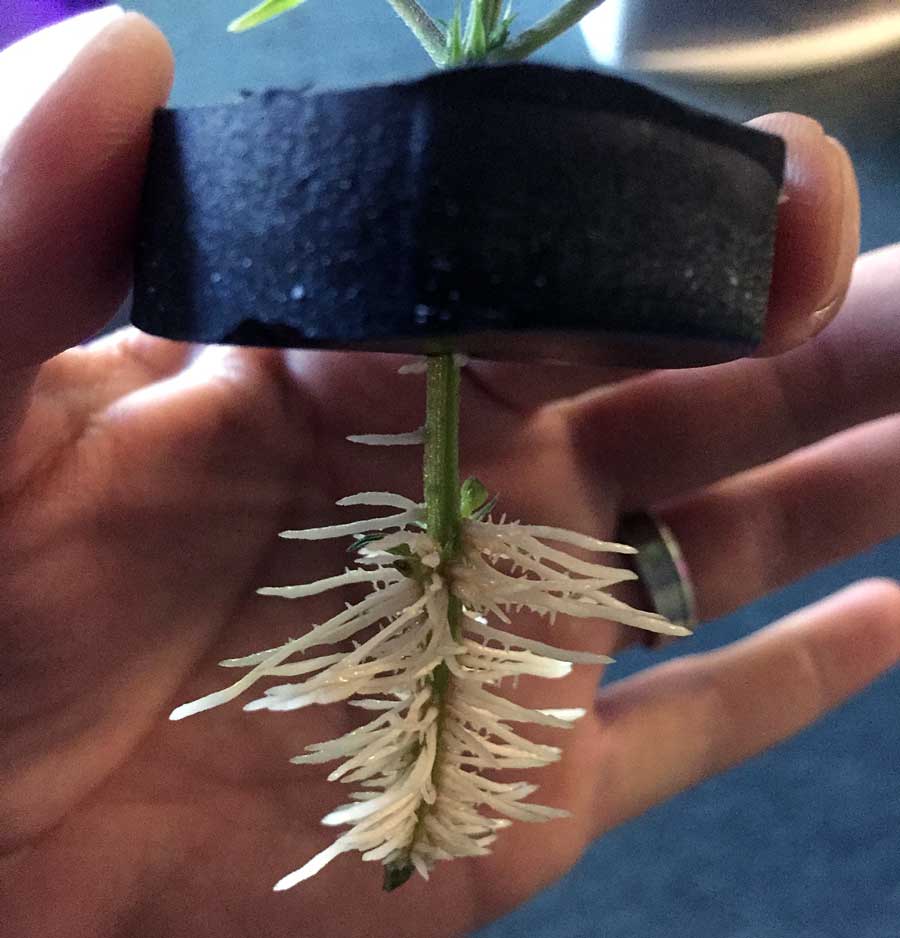
Preparing the Growing Medium
Put the rooting medium you’ve chosen in an appropriate tray or container that drains well. Using pH-adjusted water, wet the rooting medium, allowing it to soak up as much water as possible while allowing excess water to drain away. Do not squeeze rock wool cubes. Set the prepared rooting medium aside as you make your cuttings.
Selecting Plant Material for Clones
Choose a known female cannabis plant of a strain that has desirable traits such as potency, terpene profile, yield, or flowering time. Commercial cultivation operations will maintain dedicated ‘mother plants’ that are kept in a constant state of vegetative growth and used solely for providing genetic material for more plants.
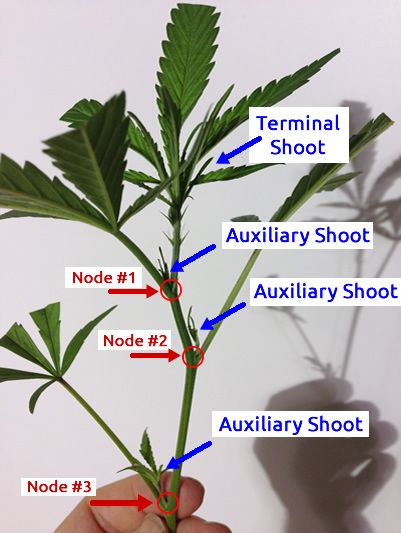
But for many home gardeners dealing with space constraints or legal limits on the number of plants they’re allowed to have, that method isn’t practical. Instead, it’s better to clone weed by utilizing branches removed while pruning plants into shape.
Select strong, vigorous branches that are 8-10 inches long with at least three to four nodes and a healthy growing tip. Cut the branch an inch below a node, clip away all but the top pair of leaves, and immediately place the cutting in water while the rest are made.
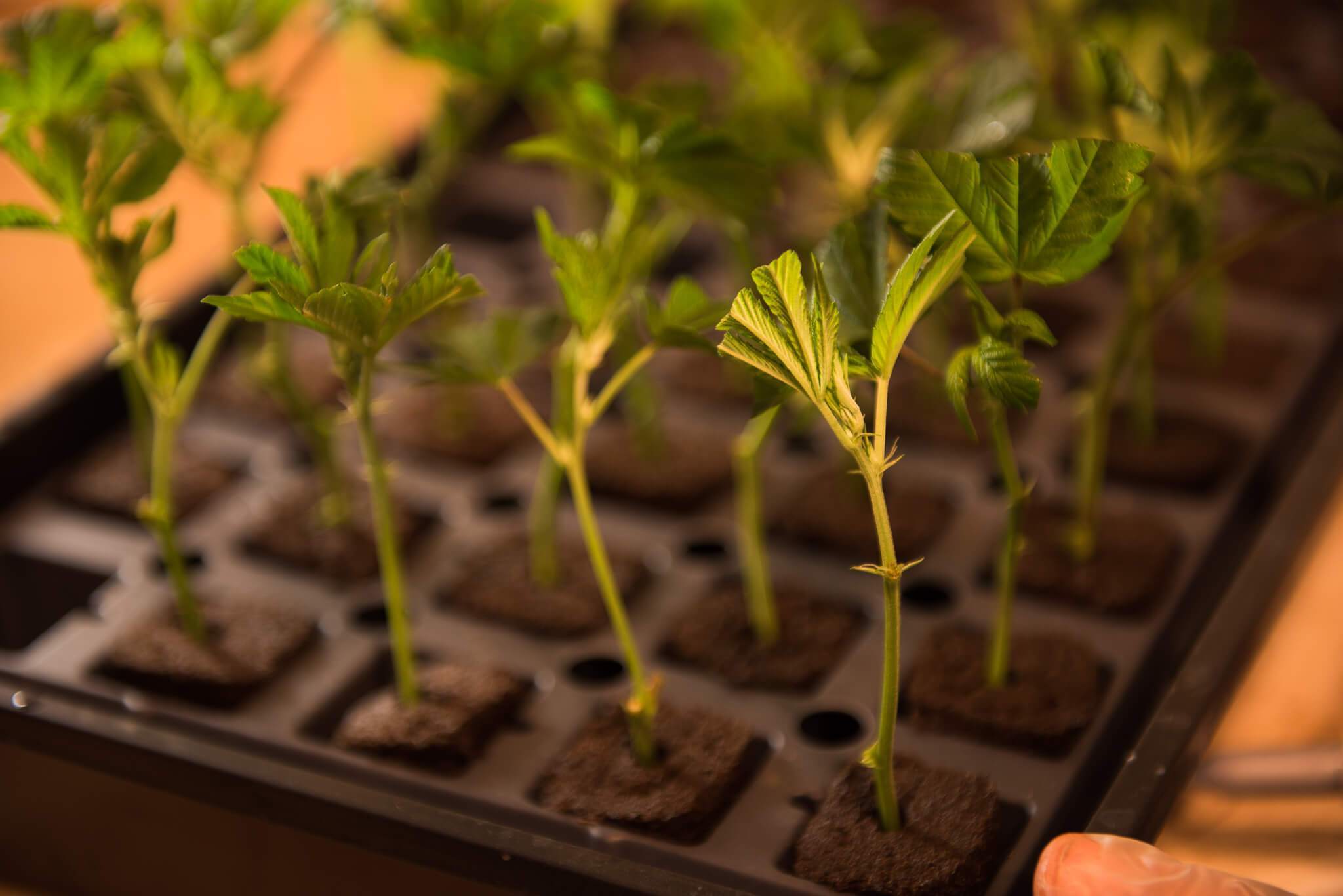
Preparing the Cuttings
After you’ve readied the rooting medium and taken your cuttings, the next step to cloning weed is preparing the cuttings. One at a time, pull each cutting from the water, and give it a fresh cut at a 45-degree angle a half-inch below the node. Then, dip the cutting in the rooting hormone so it covers the lowest node and immediately insert it in the rooting medium, being sure the node is below the surface. To help prevent mold, clip back the leaf tips slightly so the leaves of adjacent weed clones in a tray are not touching.
Gallery — Dry the Weed to Smoke the Weed:
Maintaining the Cuttings
To prevent your clones from wilting while they are forming roots, you’ll need to maintain a humid environment for them. Spray them with water occasionally to keep them fresh, or cover the trays with a humidity dome or keep them in a mini-greenhouse, but be sure to allow for some ventilation. The ideal temperature is about 78 degrees Fahrenheit, but a range of 75 to 85 will also suffice.
In cool weather, using a propagation heating mat under the trays can help speed the formation of roots. Keep your weed clones under bright light — 16 to 18 hours per day is ideal and will prevent the cuttings from flowering. Ensure that the rooting medium stays moist but not soaking wet. Use water you’ve adjusted for pH, using a flowering nutrient solution diluted to about 25 percent recommended strength.
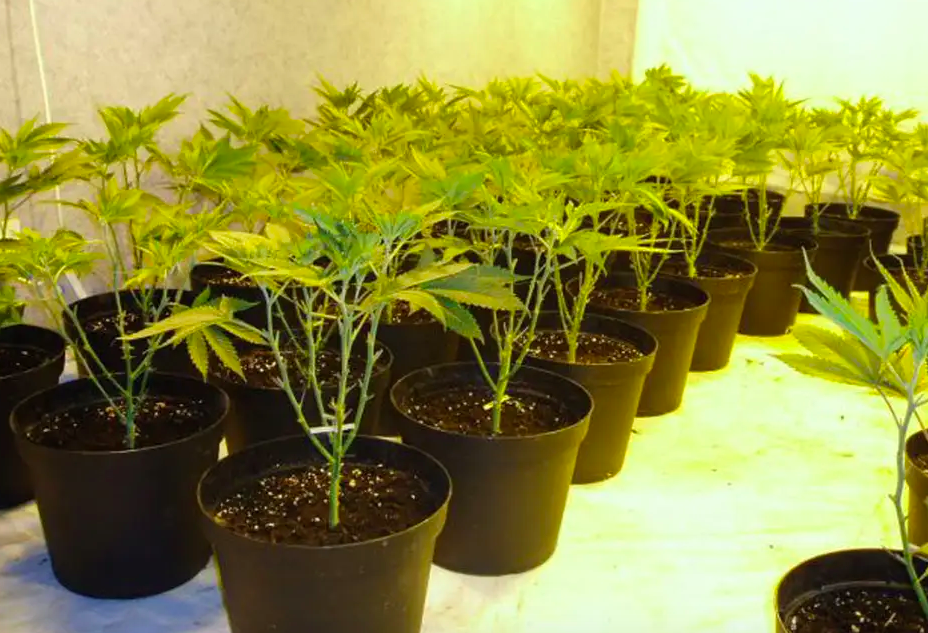
Transplanting the Clones
Under optimal conditions, it only takes about a week for your cuttings to grow roots and actually become full-fledged weed clones, but it can take up to two weeks or longer. You’ll know you’ve succeeded when the cuttings begin to show new growth or you see roots growing out the sides or bottom of the rooting medium. At this point, they are ready to be moved into a pot or larger rock wool cube, depending on your chosen cultivation method, and moved into the vegetative garden.
If you have a successful grow or two under your belt, give cloning weed a try. Before long, you’ll be producing the plants for each crop yourself and saving even more money!


